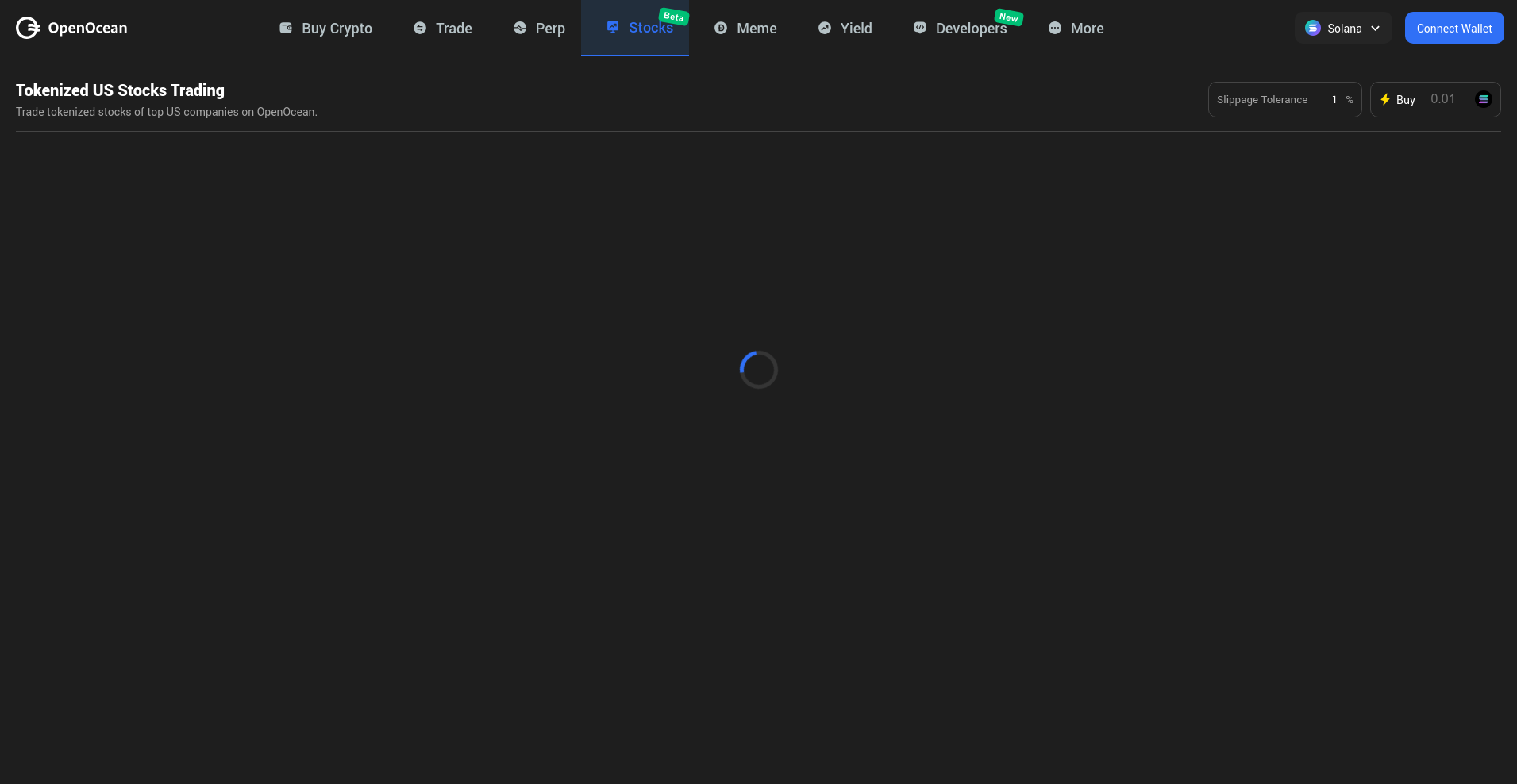OpenOcean Review: Scam or Legit Crypto? Uncovering All The Red Flags

What Exactly Is OpenOcean?
OpenOcean markets itself as a leading decentralized exchange (DEX) aggregator, promising to provide users with the best trading prices across over 30 blockchain networks. Its extensive feature set includes token swaps, limit orders, automated DCA, cross-chain bridges, and even AI-driven signals, positioning itself as a one-stop-shop for DeFi traders. The platform claims to offer deep liquidity, professional trading tools, and community governance, aiming to become a central hub in the crypto ecosystem.
However, as with many projects in the DeFi space, skepticism is warranted. This article investigates whether OpenOcean's grand promises hold up or if it harbors red flags typical of scam projects. We will dive into the team, code security, tokenomics, activity levels, and legal considerations to help investors make an informed decision.
Who Is The Team Behind OpenOcean?
OpenOcean’s team remains largely anonymous. No publicly available information confirms the identities of founders or core developers. The project is positioned as a community-driven DeFi aggregator, but insubstantial team transparency casts doubt on its credibility. Without doxxed leadership or verifiable backgrounds, assessing genuine long-term commitment becomes difficult.
Key points regarding the team and roadmap:
- Few, if any, recognizable or verified team members are publicly documented.
- The roadmap includes ambitious features such as AI signals, tokenized US stocks, and a multi-chain DEX aggregator, which are technically challenging and require substantial development resources.
- No clear partnerships with reputable institutions are announced, and no published development progress is evident through transparent channels.
Overall, the lack of transparency suggests caution, especially when considering the risk of exit scams often associated with anonymous teams.
OpenOcean Security Audit: A Deep Dive into the Code
The primary audit available comes from Certik, a well-regarded blockchain security firm, which audited the OpenOcean platform. The analysis reveals a platform with an audit coverage score of around 30%, indicating limited code review in critical areas. Notably, incidents were flagged, and the platform lacks insured protection, raising security concerns.
- Audit scope: Limited coverage (30%), suggesting many parts remain un-reviewed or potentially vulnerable.
- Incidents: Presence of incidents indicates past security issues or vulnerabilities.
- Insurance: The project does not have any external insurance to protect investors from smart contract failure or exploits.
- Security stance: The audit does not seem exhaustive, which is common among less transparent DeFi projects. Limited security assurances increase risks for users.
In summary, while there is some external auditing, the scope and depth appear insufficient to guarantee safety. Investors must accept a certain level of smart contract risk with limited recourse.
OpenOcean Tokenomics: A Fair System or a Trap?
OpenOcean’s native token appears to be OOE, with a total supply of 1,000,000,000 tokens. The project promotes staking, governance, and yield farming as core utilities. However, detailed token distribution information—such as initial allocations, team tokens, or vesting schedules—is absent. This lack of transparency on tokenomics is a red flag, as it raises the possibility of potential dumps, inflation, or centralized token control.
- Supply: 1 billion tokens, which may be high and susceptible to inflationary pressures.
- Utility: Used for staking, governance, and reward pools, common in DeFi projects.
- Distribution: No clear information on allocation percentages, vesting periods, or team token lockups.
- Risks: Without transparent tokenomics, early investors or insiders could dump tokens, leading to significant price drops.
In the absence of explicit data, investors should remain cautious about token value stabilization and potential for market manipulation.
Is OpenOcean a Ghost Town? Checking for Real Activity
According to available summaries, OpenOcean has facilitated over 7 million trades with a community of around 1.3 million active users. However, the provided data also shows zero APR and total staked values across its farms, suggesting extremely low or inactive yield pools. This could point to a lack of ongoing development, liquidity migration, or abandonment of yield incentive programs.
Further, social engagement on Reddit, Medium, Telegram, and Discord remains sporadic, with no signs of recent updates or innovative features being actively deployed. The platform’s claim of rapid development and feature expansion appears exaggerated, and the overall activity level resembles a project that may be losing momentum or existing only in marketing materials.
In conclusion, despite high user numbers on paper, the current ecosystem activity hints at a possibly dormant or abandoned project, which significantly increases investment risk.
What OpenOcean's Legal and Contractual Fine Print Might Be Hiding
Analysis of the available documentation and user interface reveals a concerning absence of comprehensive legal terms or user protection clauses. The dominant presence of JavaScript dependency and the warning about partial functionality when disabled highlight usability issues, not necessarily legal risks. However, typical red flags include:
- Absence of clear terms of service, privacy policies, or dispute resolution mechanisms publicly accessible.
- No mention of insurance or safeguard funds for user assets; this leaves users exposed to smart contract exploits without recourse.
- Potentially aggressive tokenomics with unlimited supply and no vesting details, increasing risk of pump-and-dump schemes.
While nothing explicitly illegal is evident, the lack of transparency and formal protections can serve as warning signs of predatory or negligent project management.
Final Verdict: Should You Risk Investing in OpenOcean?
Based on the available evidence, OpenOcean exhibits many characteristics typical of high-risk crypto projects. The team’s anonymity, limited audit scope, questionable activity levels, unclear tokenomics, and security concerns collectively suggest that it may not be a safe or trustworthy investment opportunity. Its ambitious feature set might appeal, but the underlying risks outweigh potential rewards, especially for retail investors without technical expertise or access to deep due diligence resources.
-
Positive Points
- Offers a wide range of DeFi tools, including cross-chain swaps and AI signals.
- Supported by external audit (Certik), indicating some level of security review.
- Large blockchain support and active community channels.
-
Major Red Flags
- Anonymous leadership and lack of transparency.
- Limited scope of security audits with incidents reported.
- No clear tokenomics or vesting schedule, risking pump-and-dump scenarios.
- Suspicious inactivity in yield farming pools and low liquidity indicators.
- Absence of formal legal documents or user protection policies.
Investors should approach OpenOcean with caution, conduct thorough due diligence, and consider the high likelihood of scams common in the space of anonymous DeFi projects.

James Carter
Chief On-Chain Analyst
On-chain analyst with a background in financial fraud detection. I use data science to dissect blockchains, find the truth, and expose scams. My motto: code doesn't lie.
Similar Projects
-
Pillmarket
Comprehensive Review of Pillmarket: Crypto Scam Checker and Project Scam Review
-
Akropolis
Akropolis Review: Scam or Legit Crypto? Scam Check & Legitimacy Analysis
-
Spool DAO
Spool DAO Review: Scam Check & Legitimacy Analysis
-
BOBO coin
BOBO Coin Review: Scam Check & Legitimacy Analysis
-
Crowdbit Academy Token (CBA)
Comprehensive Review of Crowdbit Academy Token (CBA): Is It a Crypto Scam or Legit Project? | Crypto Scam Checker